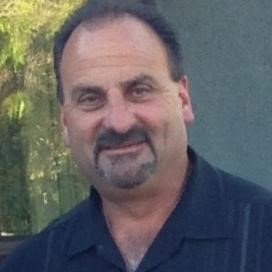 Skyline physics instructors Kolo Wamba and Émilie Hein are pleased to announce the induction of Skyline College into the next Enriched Xenon Observatory (nEXO), an international nuclear physics experiment designed to search for (and hopefully discover) an extremely rare form of radioactivity. Skyline will be the first community college to join the nEXO collaboration. The following bullet points summarize what all this means.
Skyline physics instructors Kolo Wamba and Émilie Hein are pleased to announce the induction of Skyline College into the next Enriched Xenon Observatory (nEXO), an international nuclear physics experiment designed to search for (and hopefully discover) an extremely rare form of radioactivity. Skyline will be the first community college to join the nEXO collaboration. The following bullet points summarize what all this means.
- What: nEXO is an international collaboration of over 150 scientists at 35 institutions in 9 countries. It is essentially a nuclear physics experiment whose primary objective is to observe a special form of radioactivity, called neutrinoless double-beta decay, in a common isotope of xenon. Xenon, like neon, is part of the family of chemical elements in the periodic table that we call noble gases. It is available in trace amounts in the Earth’s atmosphere. When the nucleus of a xenon atom undergoes neutrinoless double-beta decay, it transforms into a barium nucleus as it emits two electrons (also known as “beta rays”– hence the “double-beta” in the name). This form of nuclear decay has never been observed (even though there has been one famous and highly controversial claim to the contrary).
- Why: If neutrinoless double-beta decay were discovered it would help us understand why we even exist at all! The laws of physics, as they are currently understood, appear to predict that equal amounts of matter and antimatter should have formed during the Big Bang, and whenever you have matter and antimatter together in the same place, they sort of cancel each other out, leaving behind only a burst of pure energy. If this had actually happened, today’s universe would just be full of radiant energy– it would have no galaxies, stars, planets, or people– and it is a long-standing mystery as to why this is actually not the case. But if there were certain special subatomic processes happening in the early universe (called “lepton number violating processes”, of which neutrinoless double beta decay is one example), they could have provided a way for all the antimatter to get “filtered out” before it would have had a chance to cancel out all the matter.
- How: To observe neutrinoless double beta decay, nEXO will collect 5 tonnes of xenon in liquid form and place it in a special vessel deep underground (to shield the experiment from cosmic rays). If one of the xenon atoms undergoes a decay, it will produce a tiny pulse of electricity and a brief flash of light right at the location in the liquid xenon where the decay happened. Special electronics will capture and record these signals, and computer algorithms will be used to help discern whether the captured signals came from a genuine neutrinoless double beta decay or from other uninteresting forms of radioactivity that arise from whatever residual mildly radioactive contaminants might accidentally be present in the experiment. Neutrinoless double beta decay is such a rare process that we expect to observe fewer than 10 of these decays in the 5-tonne sample of liquid xenon over a 10-year period.
- Where: At the moment, the 5-tonne liquid xenon detector setup is still being developed by the nEXO team, but when it is complete it will be installed and operated 2 km underground at SNOlab (a former nickel mine near Sudbury, Canada). The R&D for the detector is being performed at nEXO member institutions all over the world.
- Who: Physics Profs Wamba and Hein are collaborating scientists on nEXO and are currently helping to perform some of the R&D that is being done to create the special 5-tonne liquid xenon detector. Much of this work takes place at Stanford University and at SLAC, both of which are also nEXO collaborating institutions. Skyline physics or engineering students who are interested in getting involved with nEXO (as SLAC summer CCI scholars, as future graduate students at a nEXO member institution, or as Skyline students working on nEXO-related honors transfer projects) should contact Prof Wamba or Prof Hein for more information.
- Want to learn more? Visit the official nEXO project website at https://nexo.llnl.gov/.
Article by Kolo Wamba






